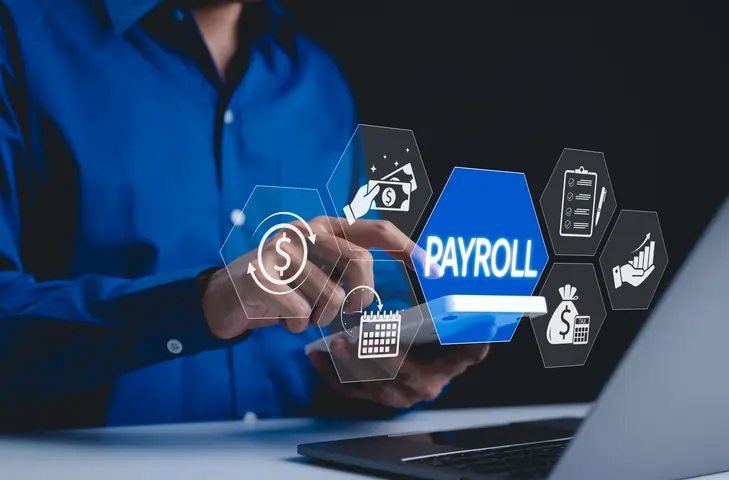
In any workplace, payday is sacred. But what happens when that paycheck doesn’t arrive on time or worse, arrives wrong?
For thousands of employees across a large multinational firm, payroll errors had become a persistent, stressful issue. A missed paycheck meant a missed rent payment. A delayed direct deposit forced parents to juggle grocery budgets. One miscalculated salary could trigger a week’s worth of back-and-forth with HR. Now multiply that by thousands. “I’ve seen what happens when pay goes wrong,” says Chinni Krishna, a Business Intelligence (BI) engineer who stepped in to overhaul the company’s payroll system. “It is not just an error on a spreadsheet, it is someone not being able to pay for their child’s school fees.”
Chinni’s work came at a crucial time. As companies across the globe increasingly turned to digital systems to handle complex HR and finance operations, many found themselves overwhelmed with legacy tools that couldn’t keep up. The global payroll and HR solutions market, expected to hit $50.4 billion by 2028, reflects this rapid growth but also highlights the risks. Payroll systems that lag behind can cause compliance issues, rising costs, and employee dissatisfaction.
At Chinni’s firm, the payroll error rate had climbed to a troubling 5%. For a workforce of over half a million, that meant tens of thousands of inaccurate transactions each month. Finance and HR teams were buried in support tickets. Employees grew frustrated and trust eroded. “Every error had a cost not just financial, but emotional,” Chinni recalls. “We needed to build a system that employees could rely on, not just tolerate.”
Chinni led the initiative to do just that. Drawing on his expertise in SQL, PL/SQL, Tableau, and real-time analytics, he designed an automated payroll error detection system. The solution was simple in principle: catch errors before they reach the employee. But in practice, it required rethinking how payroll data was validated, cleaned, and processed across hundreds of systems and departments. Within six months, the payroll error rate dropped from 5% to just 1%. The results were immediate and tangible: fewer support tickets, fewer angry calls, and restored employee confidence. The company saved approximately $50,000 per month in manual corrections and support overhead. More importantly, workers began receiving their salaries on time and accurately.
“Automation didn’t just save money,” Chinni explains. “It gave people back their peace of mind.”
The ripple effects extended far beyond payroll. By introducing real-time financial analysis and business intelligence dashboards, Chinni also helped executives make faster, smarter decisions about resource allocation. CFOs could now monitor business unit performance in real time, ensuring funds were directed where they were needed most. Cash flow management improved, forecasting became more accurate, and the entire finance function became more agile.
Chinni’s impact wasn’t limited to a single project. His work encouraged a broader digital transformation across the finance department. Legacy systems were replaced with cloud-based solutions. AI-driven anomaly detection was introduced to flag suspicious transactions. Real-time dashboards became standard tools for everyone from HR associates to senior finance officers. “I wanted to create systems that wouldn’t just solve today’s problems, but prepare us for tomorrow’s,” Chinni says. “That meant pushing for change even when it was uncomfortable.”
And change was needed. Industry-wide, payroll errors are among the most costly HR challenges. A study by the American Payroll Association found that 40% of small businesses make payroll mistakes, leading to billions of dollars in IRS penalties and lost productivity each year. The burden often falls hardest on lower-income employees, for whom a delay or error can mean overdraft fees, late rent, or missed utility payments. That’s why Chinni framed his work not just as an engineering challenge, but as a matter of workforce fairness. “People count on their salaries. It is our responsibility to get it right,” he says. “A good payroll system isn’t just about efficiency, it is about dignity.”
As automation reshapes the future of work, professionals like Chinni are playing a vital role in ensuring that these changes serve the people at the heart of every organization. His story is part of a larger movement toward data-driven, people-focused financial systems that value trust, transparency, and timely execution.
Looking ahead, Chinni sees even greater potential. Technologies like AI and blockchain could one day make payroll fully predictive and tamper-proof. Real-time analytics could provide organizations with daily visibility into expenses, liabilities, and future obligations. And payroll could evolve from a reactive function to a strategic asset.
“The future of payroll isn’t just faster spreadsheets,” he says. “It is about building systems that empower people, support growth, and remove the friction that slows companies down.”
Chinni’s journey offers a glimpse into that future one where innovation isn’t measured just in code written or dashboards deployed, but in the trust restored between workers and the companies that employ them. By ensuring that 500,000 people now receive their pay accurately and on time, Chinni Krishna didn’t just fix a system he helped build a better foundation for the modern workplace.
About Author:
Michael Cain is a NewsBreak contributor and an Editor at Springer Nature, focusing on tech-driven narratives and financial reporting. With a background spanning artificial intelligence, cloud computing, and emerging fintech innovations, Michael has authored pieces like “AI-Powered Merchant Risk Assessment” and “Breaking New Ground in Data Security,” spotlighting cutting-edge solutions that shape modern businesses. Equally at home analyzing corporate earnings or exploring advanced technology trends, Michael aims to bridge the gap between complex concepts and everyday impact.
Connect with him at [email protected] for insights into the evolving frontiers of tech, finance, and beyond.


